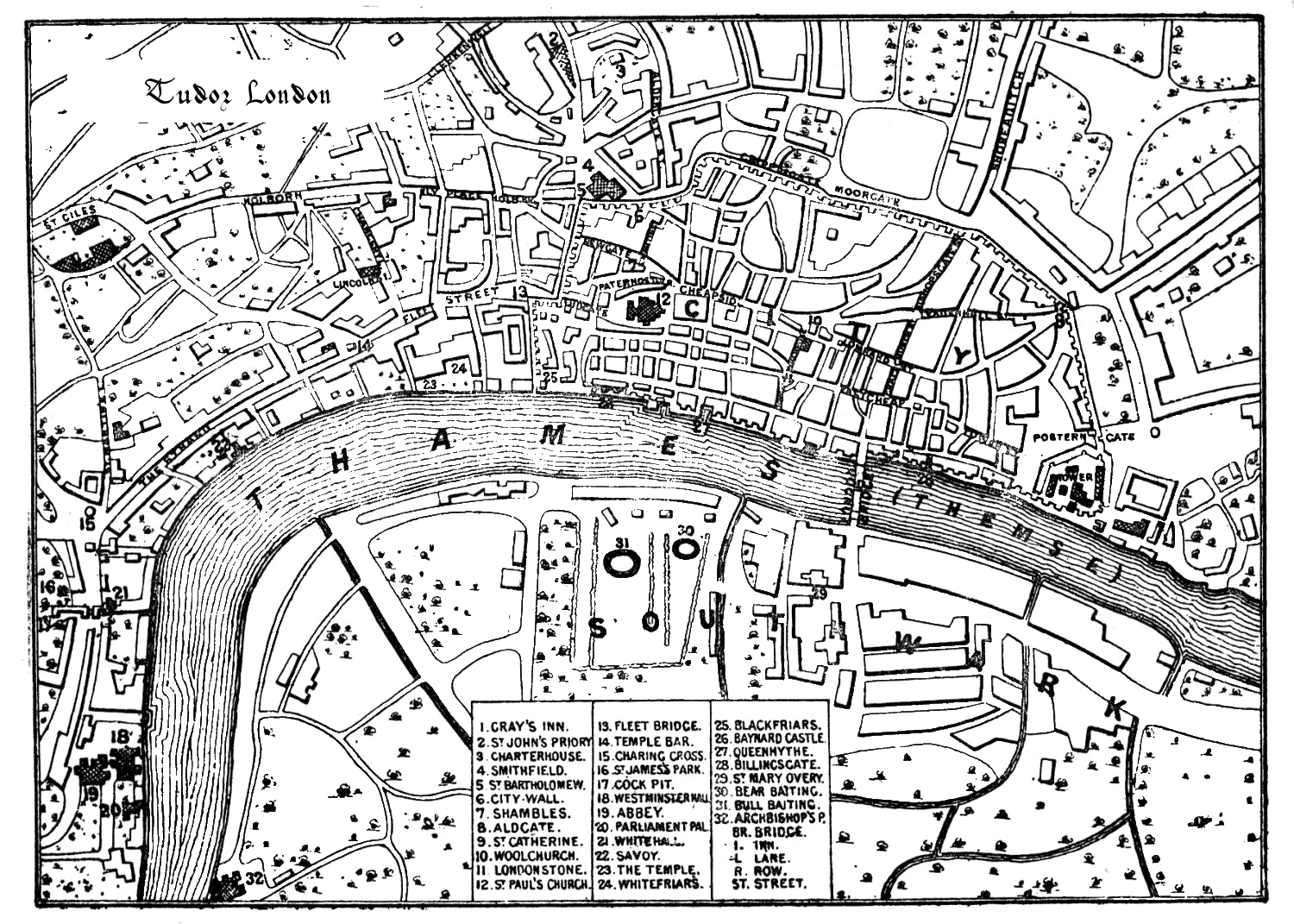Skip to Main Content

Life in Elizabethan times
Class structure
Social structure
- The nobility and knights were at the top of the social ladder
- The biggest growth was in the newly formed merchant class
- There was a concentration of urban population, due to people moving to urban areas in search of work
- London’s population grew 400%, reaching a population of nearly 200,000 people in the city
- The population of England also grew, due to an increase in fertility, and decrease in death rate.
- The literacy rate was increasing
- The world was being explored, which fed the people of London’s growing passion for new ideas
- Wealthy men became patrons of writers, allowing literature to flourish
Map of London at the time
Politics of the time
Political
- Elizabeth I was queen of England and head of the Church of England
- England was still in some ways a feudal society
- A feudal society was where a lord would own an estate (a piece of land) and allow commoners to live on it. In return they would work the land and harvest the crops
- The households of England would sometimes be treated to the honour of housing the Queen and her household. Queen Elizabeth would go on constant progresses about the country, which not only brought her in touch with her subjects, but also saved her household money by making the nobility foot the bill for her visit.
- Within nobility, there was a divide between old and new. The old noble families were predominantly catholic, while the new noble families belonged to the Church of England.
- The old families were exempt from the oaths of allegiance to the church, and some had their own private chaplains
Economics and trade
Economic
- Markets were common
- The wool trade was very prosperous, which led to a increase in building in the active wool areas
- The amount of poverty increased during this time, partially due to the increase in population. The nation’s resources had to be shared with a greater number of people
- Because the poor became poorer, a growing number
of vagabonds and beggars roamed the country
- The government created Acts which acknowledged that it was the community’s responsibility to care for the poor
- Houses of correction were set up in London, which was notorious for its number of poor people.
- These houses would provide useful tasks for the vagrants, thieves, and criminals in order to cure them.
- There were many classifications of poor people


